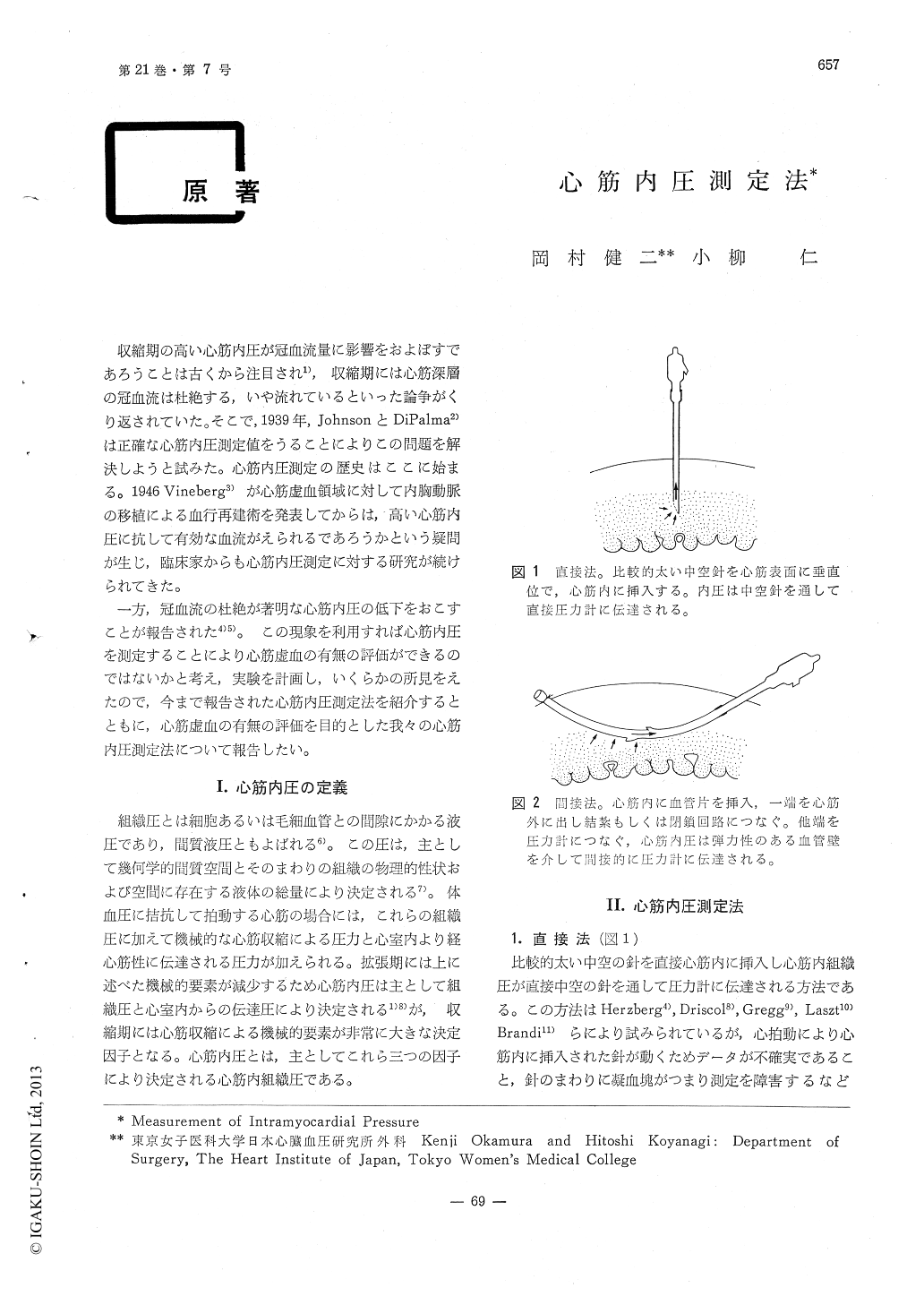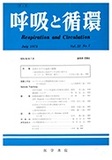Japanese
English
- 有料閲覧
- Abstract 文献概要
- 1ページ目 Look Inside
収縮期の高い心筋内圧が冠血流量に影響をおよぼすであろうことは古くから注目され1),収縮期には心筋深層の冠血流は杜絶する,いや流れているといった論争がくり返されていた。そこで,1939年,JohnsonとDiPalma2)は正確な心筋内圧測定値をうることによりこの問題を解決しようと試みた。心筋内圧測定の歴史はここに始まる。1946 Vineberg3)が心筋虚血領域に対して内胸動脈の移植による血行再建術を発表してからは,高い心筋内圧に抗して有効な血流がえられるであろうかという疑問が生じ,臨床家からも心筋内圧測定に対する研究が続けられてきた。
一方,冠血流の杜絶が著明な心筋内圧の低下をおこすことが報告された4)5)。この現象を利用すれば心筋内圧を測定することにより心筋虚血の有無の評価ができるのではないかと考え,実験を計画し,いくらかの所見をえたので,今まで報告された心筋内圧測定法を紹介するとともに,心筋虚血の有無の評価を目的とした我々の心筋内圧測定法について報告したい。
An attempt to estimate the intramyocardial pressure change in the ischemic area was made in anesthetized dogs by using a new technique of coronary vein wedge pressure. A small catheter was inserted into the great cardiac vein via the coronary sinus and wedged distally. The proxi-smal portion of the anterior descending branch of the left coronary artery was occluded at inter-vals. The coronary vein wedge pressure in the non-occluded period is about 40 to 50% of the left ventricular pressure.

Copyright © 1973, Igaku-Shoin Ltd. All rights reserved.


